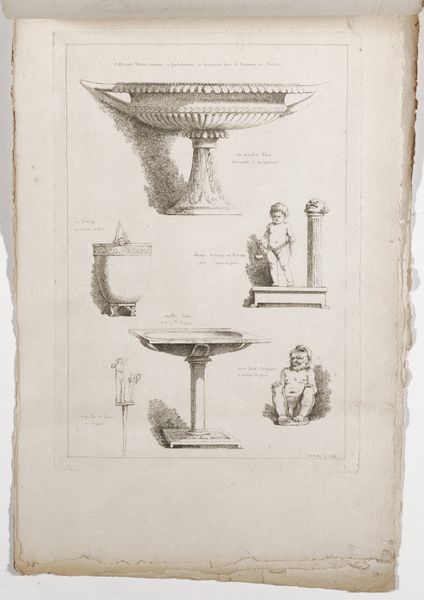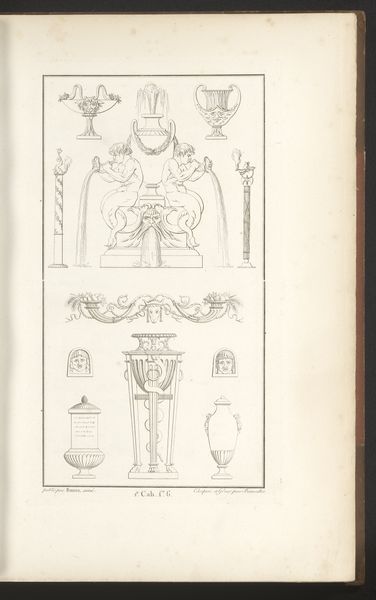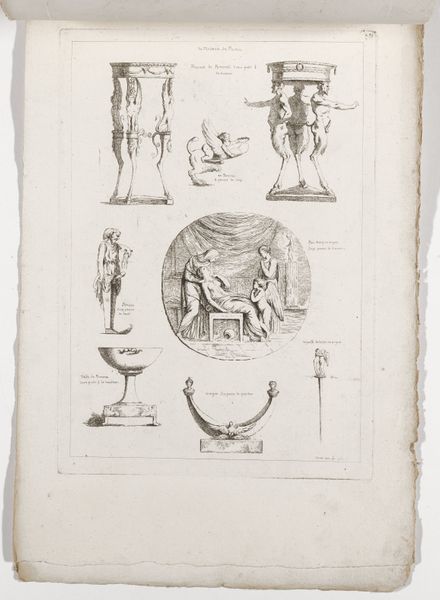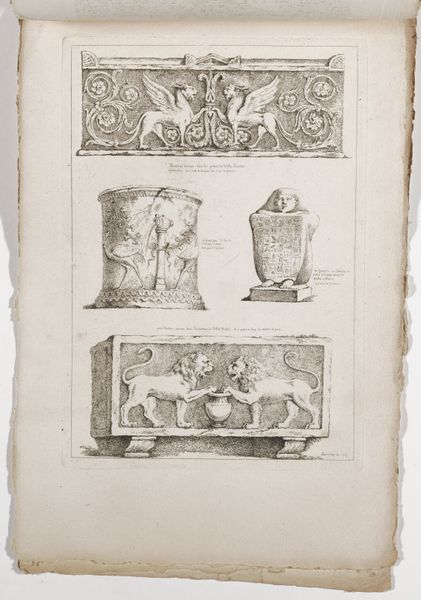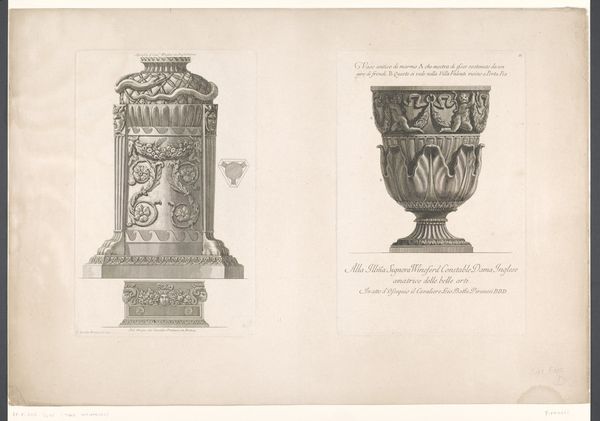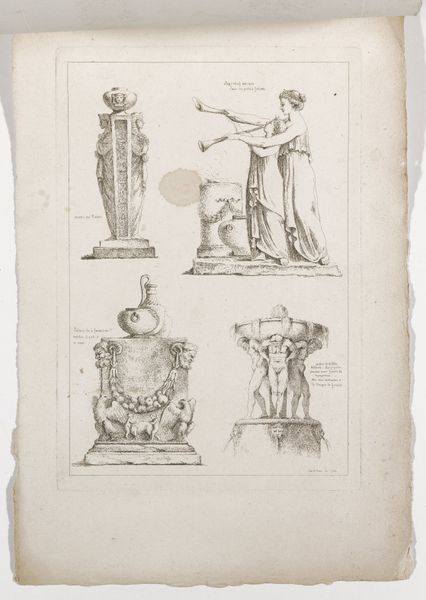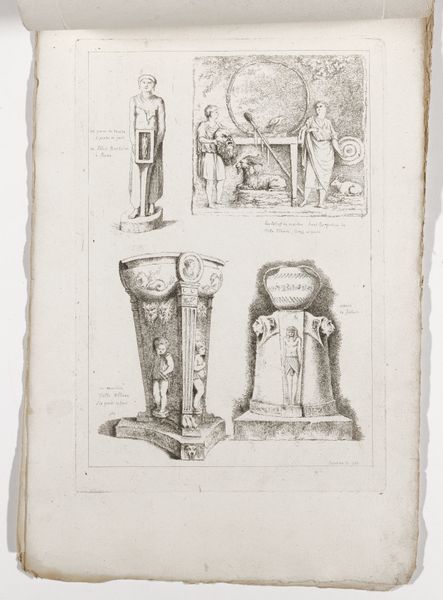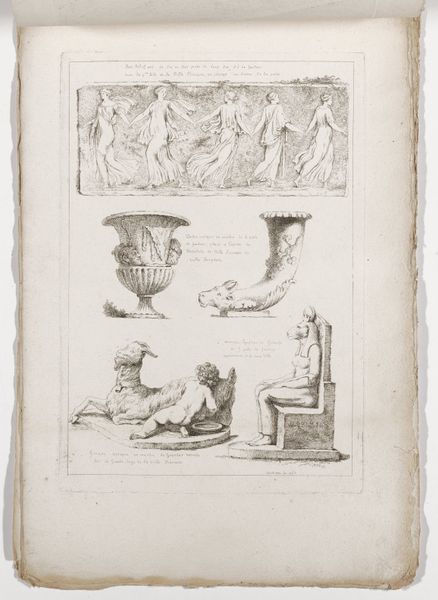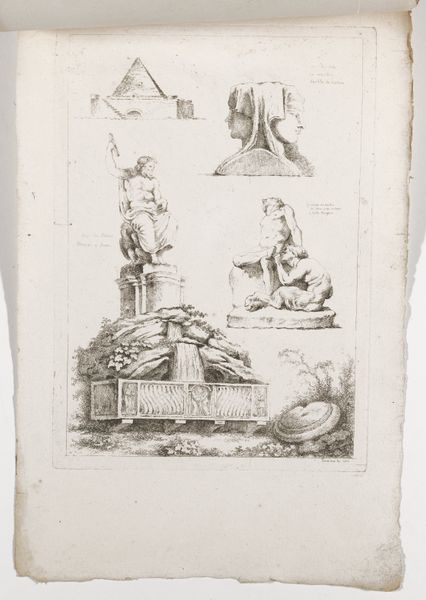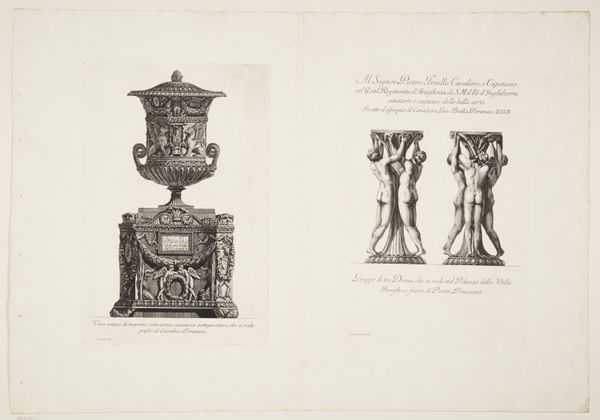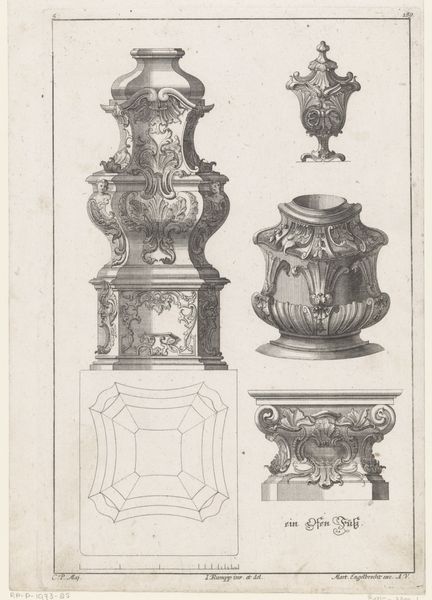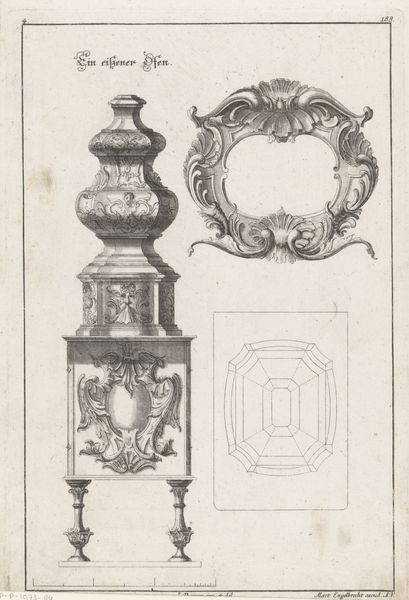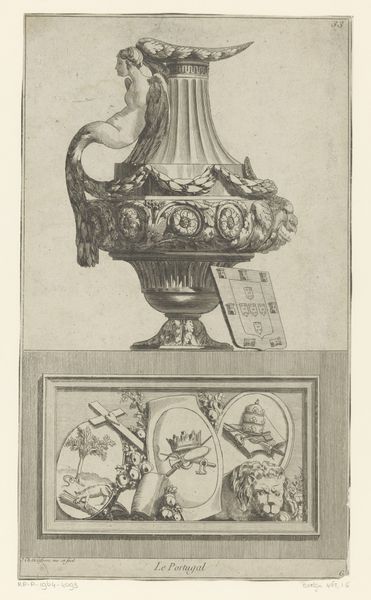
drawing, print, etching, paper, ink
#
drawing
#
neoclacissism
#
allegory
# print
#
etching
#
paper
#
ink
#
history-painting
#
academic-art
Dimensions: 12 13/16 × 8 13/16 in. (32.54 × 22.38 cm) (plate)17 3/16 × 11 1/4 in. (43.66 × 28.58 cm) (sheet)
Copyright: Public Domain
Jean Claude Richard, Abbé de Saint-Non, created this print titled "Fascicule II," using etching. It exemplifies the 18th-century fascination with classical antiquity. Made in France, the image showcases various Roman artifacts like friezes, urns, and sculptures. These were popular motifs during the Neoclassical movement, which sought to revive the artistic and cultural values of ancient Greece and Rome. The print reflects the era's burgeoning interest in archaeology and the desire to document and disseminate knowledge of classical art. The institutions of art played a crucial role in shaping artistic production, in this case through publishing. Prints like this helped circulate visual information, influencing taste and design across Europe. They reflect not just artistic styles but also the social and economic structures that supported the production and distribution of art. By studying such works, we gain insight into the politics of imagery and the social conditions that shaped artistic production. Resources like period journals, architectural treatises, and museum collections can further illuminate our understanding of the relationship between art and society in the 18th century.
Comments
minneapolisinstituteofart almost 2 years ago
⋮
The Jean-Baptiste Claude Richard (also known by his title abbé Saint-Non) embodied the important role of the amateur, an patron and connoisseur of the arts as well as a practitioner in 18th-century France. He was a skilled networker, a curious, innovative printmaker, and he supported his artist friends in their projects and travels. Saint-Non executed this suite of prints in Paris in 1763, representing antique fragments and reliefs he saw during his travels in Italy from 1759 to 1761. Most of the monuments are identified in the inscriptions by their locations in Rome. The works reflect French artists’ fascination with antiquity at the time, and the way in which these sources were transmitted to a larger public through the circulation of prints. Remarkably the suite of etchings remain as originally issued, in three groups of six deckle-edged sheets stitched together simply along the top edge.
Join the conversation
Join millions of artists and users on Artera today and experience the ultimate creative platform.
